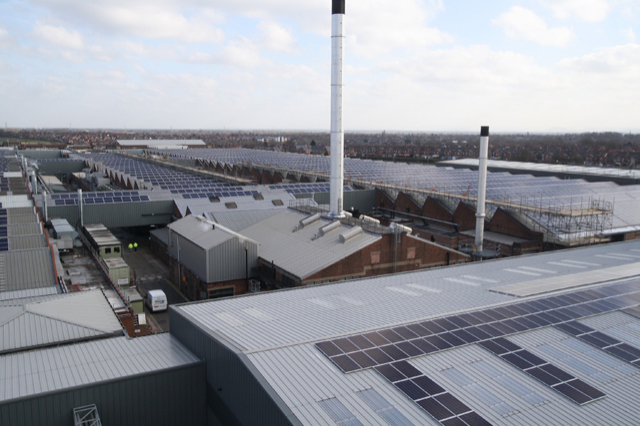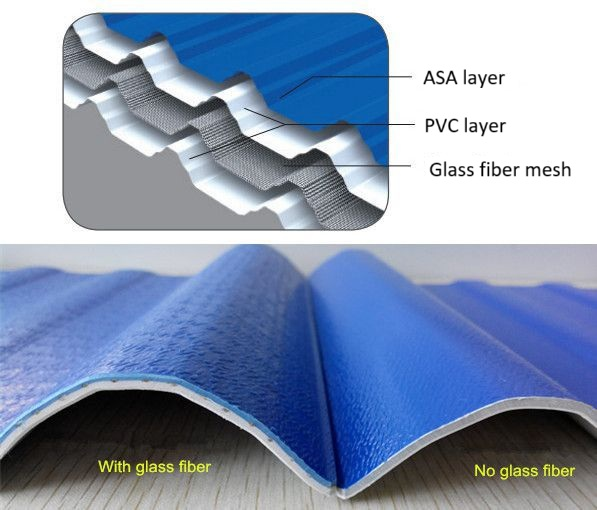
As industries change and grow, there’s a rising need for really good roofing solutions for factories. It’s not just about warehouses or production plants anymore. Today’s industrial and commercial buildings need roofs that do more than just offer shelter. They must also handle the structural weight of heavy equipment and stand up to environmental pressures.
One of the most vital things to consider when picking a roofing material is how much weight it can hold. It’s now standard to see things like HVAC systems, solar panels, and other machinery on rooftops. What’s more, this means a roof has to support a huge amount of weight without putting safety or performance at risk.
Industrial roofs aren’t just passive shields against the weather these days. They are often platforms for vital infrastructure.
Modern factory roofs have to support heavy things. For example, HVAC units that control indoor temperatures or solar panels that create renewable energy. These additions put a lot more structural demand on a roof.
Roofs deal with more than just the constant weight of equipment. They also face changing pressures from wind trying to lift them, temperature swings, and even earthquakes. Over time, these forces can wear down normal materials if they aren’t handled right.
Picking a material that can’t hold enough weight can lead to big problems. It could sag, leak, or even collapse entirely. So, it’s very important to choose a modern solution like fiberglass-reinforced UPVC. This choice ensures you have reliability for a long time under all sorts of conditions.
To keep up with what modern industry needs, JIELI created a multi-layered UPVC sheet. It’s boosted with a fiberglass mesh, which was specifically designed for strength and a long life.

The secret to this product’s amazing performance is in its layered design:
ASA Surface Layer for UV and Weather Resistance
The UPVC roof sheet has an ASA surface. ASA is a kind of acrylic resin that resists UV rays and protects the color, making sure it lasts for 8-10 years. So, this stops the fading and breaking down that happens from being in the sun for a long time.
Fiberglass Mesh Core for Tensile Strength and Impact Resistance
Our patented product is the fiberglass-reinforced UPVC roof sheet. It includes a layer of fiberglass mesh inside the PVC/UPVC sheet. This makes its tensile strength 30% better and its impact resistance 50% better. Thus, it’s perfect for places with heavy equipment or hailstorms.
Dual UPVC Layers for Structural Stability
The inside layers provide stiffness but also stay flexible enough to take shocks. This makes sure the material doesn’t break under mechanical stress.
Regular UPVC sheets give you basic protection. However, they don’t do well when they have to hold a lot of weight.
Enhanced Load-Bearing Capacity
The fiberglass in the middle boosts tensile strength by 30%. It also supports a 20% longer purlin distance. This makes it great for wider areas without needing extra support structures.
Longer Lifespan and Greater Durability
This roofing solution is a composite construction. Thanks to that, it resists cracking, warping, and aging much better than the standard options. In the long run, that means fewer repairs.
JIELI’s patented sheets offer more than just a strong structure. They also deliver outstanding performance in many areas that are very important for industrial use.
![]()
Our PVC/UPVC roof sheets are known for a few things. First of all, they provide heat and sound insulation. They are also rust-free and stand up to chemical corrosion. This makes them a great fit for chemical plants or coastal factories where corrosion is a real problem.
The UPVC roof sheet has a B1 fire rating. This means it’s hard to light on fire and puts itself out. This level of fire resistance makes workplace safety standards much better.
ASA, which is a type of acrylic resin, protects the color. It makes sure the color lasts for 8–10 years. Besides, it helps your building keep a professional look all year.
The design has multiple layers. This stops water from getting in and also resists mold growth, which is a frequent problem for metal roofing in wet climates.
These sheets also make the workplace more comfortable:
Sound Reduction by 25–30 dB
The UPVC roof sheet is great for sound insulation. It cuts down noise by 25–30 dB, which lessens the noise from rain or machines on the roof.
Thermal Conductivity 0.325 W/(m·K) – Ideal for Hot Climates
The thermal conductivity of the PVC material is 0.325 W/(m·K). This is a big help in keeping indoor temperatures steady, even when it’s very hot in the summer.
Fiberglass-reinforced UPVC is incredibly versatile. This makes it a good choice for many different industrial uses:
Heavy air conditioning systems need a stable base. The improved tensile strength of this roofing makes sure these units stay safely attached without hurting the roof’s surface.
More and more buildings are using solar energy. This trend requires roofs that can hold the weight of the panels plus all the mounting gear. JIELI’s reinforced sheets can handle these weights with no problem. They also resist UV damage over time.
Sometimes, pressure is put on the roof from inside. For example, vibrations from forklifts or from cranes attached to the ceiling. A strong material like fiberglass-reinforced UPVC spreads this stress out evenly over wider areas.
JIELI is a leader because of its product quality. But it’s also a leader because of its new ideas and technology.
Our patented fiberglass-reinforced UPVC roof sheet technology makes the sheet much stronger. It improves both tensile strength and impact resistance. Right now, no other Chinese manufacturer has this exact technology.
Our products have earned CNAS, UL, and other testing certificates. This confirms they meet international safety standards, which is critical for big projects around the world.
JIELI has its own lab for testing. The government has also authorized it as the testing center for UPVC roofing products. We put every batch through tough testing before it ships. This process guarantees that the quality is consistent, from the raw materials to the final product you receive.
Being cost-effective is about more than the initial price. It also includes how easy the installation is and how much you save on maintenance over the years.
Because it’s lighter, it costs less in labor to install. It also puts less structural weight on the building’s frame. This makes it a great choice for updating old roofs or for modular buildings.
It has a purlin distance of ≤1200mm. This fits perfectly with the modern pre-engineered steel structures that are common in construction projects all over the world today.
These sheets are highly resistant to things that cause wear, like UV light or acid rain. They don’t rust, either. As a result, they offer decades of reliable service without the need for constant, expensive upkeep that drains your budget year after year.
Being sustainable is more important than ever. JIELI delivers in this area, too.
The way we make our products creates minimal harmful emissions. We also optimize how we use resources. This makes it a responsible choice that lines up with green building certifications across the globe.
Our products are good for the environment. They don’t have any asbestos and are made from materials that can be recycled. So, at the end of their life, they can be recycled instead of being thrown in a landfill. This is a key detail in corporate sustainability reports today.
Q1: Is fiberglass-reinforced UPVC suitable for high-temperature environments?
A: Yes. The PVC material used in JIELI’s fiberglass-reinforced sheets has a thermal conductivity of 0.325 W/(m·K). This makes them fantastic insulators against the heat that builds up in factories during hot summer months.
Q2: How does this roofing handle strong winds or storms?
A: The impact resistance is boosted by up to 50% because of the fiberglass mesh inside. That makes it perfect for places that often get strong winds or hailstorms.
Q3: Can I install solar panels directly onto this type of roofing?
A: Of course. Its improved load-bearing capacity means you can safely mount solar panel arrays without harming the roof’s structural integrity.
